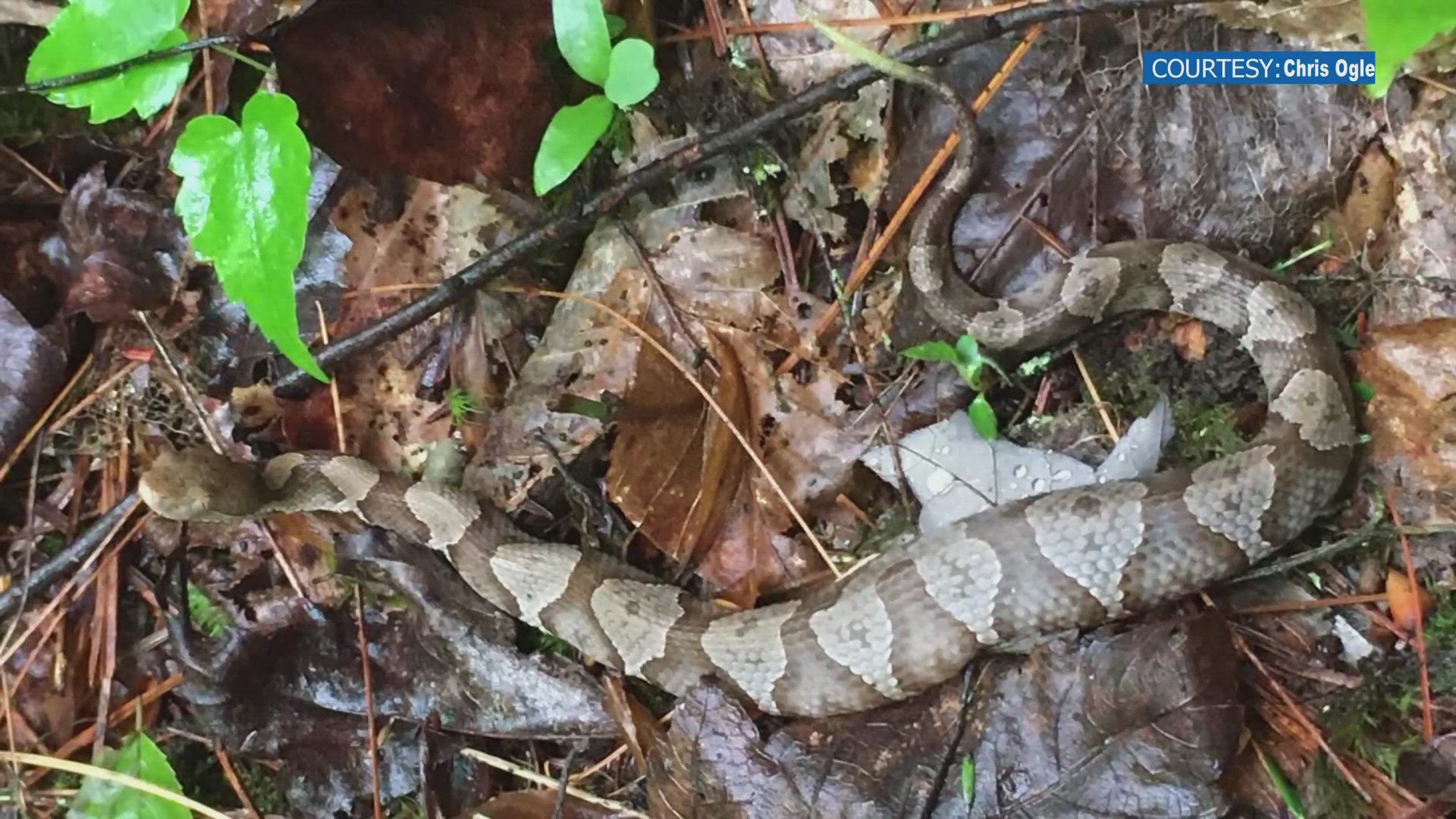KNOXVILLE, Tenn. — The colors are changing and Halloween is around the corner, bringing scares that can be more threatening than skeletons or ghosts — baby copperheads. This venomous snake is mostly found in the mountains of East Tennessee, usually off the beaten path and in wooded areas. However, they can also be found in areas like agricultural fields or near stream edges.
Michael Ogle, the curator of herpetology at Zoo Knoxville, said they tend to avoid inhabited areas and especially try to avoid people.
"Everyone, of course, thinks every snake they encounter is a copperhead. But, I assure you, it most of the time is not," said Ogle. "We're a very large predator to them. So, when they see our feet coming at them, they will do their best just to stay there."
From October to November, young copperheads begin venturing out into the world. The Tennessee Wildlife Resources Agency said females give live birth to an average of seven young in the late summer or early fall. They can be identified by dark brown "hourglass" crossbands along their backs and their large, triangular heads.
Ogle said their camouflage works well to keep them out of sight of predators, and of people.
"You're not going to be able to see them at all, and they're just going to want to stay still," he said.
The Tennessee Valley Authority said anybody who ventures out onto the trails should make sure to carefully watch where they walk. It said baby copperheads are much smaller than their adult counterparts, which can reach around 3 feet long. They can also be found in smaller, damp places like in logs or flowerpots.
Young copperheads can also be identified by yellow-green tail tips, which are used to lure prey within striking distance in a hunting behavior known as "caudal luring." The snakes primarily eat mice, but can also eat cicadas, small birds, amphibians and other snakes.
East Tennessee is home to Northern Copperheads, as opposed to Southern Copperheads that can be found in West Tennessee. Similar-looking, nonvenomous species can also be found in the state, such as milksnakes or Eastern Hog-nosed snakes. Copperheads also aren't unique to Tennessee. They can be found in Illinois, Massachusetts and beyond.
Copperheads are one of four venomous snake species found in Tennessee. Its venom breaks down red blood cells and is used to subdue small prey, according to the Smithsonian's National Zoo and Conservation Biology Institute. However, their venom is not especially potent. As a result, fatalities from copperhead bites are rare, according to the TWRA.
If someone is bit by a copperhead, Ogle said they should remain calm. They should then remove any rings or watches, lie down and call 911.
"Go to the hospital, you're going to be fine," he said.
Copperhead snakes can spark fear among many people who live in East Tennessee. But most major animal associations and state agencies have the same advice — leave them alone. The TVA encouraged people on social media to respect their boundaries so that people and snakes can co-exist safely.
"It's always best just to leave them alone," Ogle said.

